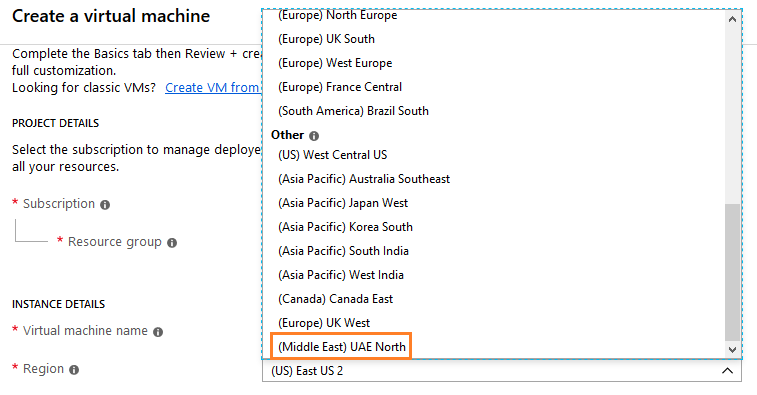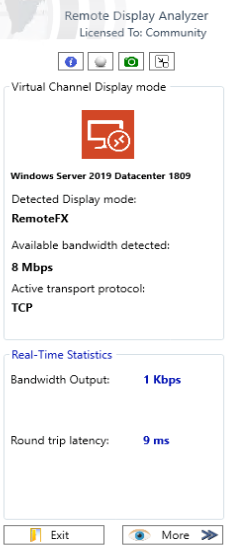Introduction:
Microsoft just announced the availability of Azure Datacenters in UAE one named North based in Dubai and the other based in Abu Dhabi with no naming as of yet (Not available yet in portal but is going to be called UAE Central). This is a huge achieved milestone by Microsoft for the sole fact that the only thing holding cloud adoption in the region was the lack of presence of local datacenters. As of now, Office 365 and Azure workloads are supported and Dynamics to come in the future.
I just finished my Masters dissertation a month go on the subject of “Barriers to adoption of public cloud computing in GCC based organizations“ in which I concluded that all the perceived barriers to actual adoption and migration whether right or wrong can be mitigated when Cloud Service Providers open redundant Datacenters in every country of the region. Politics aside, the availability of redundant datacenters in UAE opens unlimited possibilities for customers and partners alike to start the journey of public cloud adoption.

Barriers of Adoption !? No More … !
Data, no matter how it is classified, can now be stored in a “secure” encrypted manner within the same country and made highly available through redundant datacenters in the same region zone. This alone, along side other mitigated barriers by the presence of local datacenters, can now give organizations the compliance “approval” from governing bodies such as NESA in the UAE to move on with their public cloud adoption plans without having long controversial debates on the explanation of certain compliance standards points that often more than not end in disputed conflict. A note here is that Microsoft can take it one step further and actually agree with NESA on certifying its own datacenters and processes/procedures to be NESA standards compliant which would allow Microsoft to approach Azure customers on the possibility of simplifying the NESA compliance by adopting Azure …
The second barrier, after security compliance, that was preventing mass adoption of public cloud computing in the region generally and in UAE specifically was that latency was too high for most workloads. Microsoft Azure nearest DC was initially UK South then with the introduction of India DC’s that became the nearest despite the last not supporting all types of Azure services initially. Latency ranged between 90 to 100 ms for India Azure DC and 120 to 150 ms for UK South Azure DC. This meant that a very limited number of workloads could run under these network conditions.
Web based workloads such as Email systems and Websites do work fine under such network latency conditions but critical core business applications do not, especially when integration is required with on-premises components that are not good candidates for a cloud move and YES they do still exist. VDI for example is a network latency sensitive solution and although it works with high latency environment yet user experience is effected so why would I want to move to the cloud when my production experience will be negatively effected. The move to the cloud is not just about lifting and shifting workloads, keeping in mind that NOT all workloads are cloud compatible despite what vendors want to claim. Most of the time, organizations will still need to host some workloads on-premises and will require a low latency high bandwidth and speed link to manage the hybrid connections between both environments especially when these workloads are interdependent.
Latency:
Although the UAE DC’s have not yet been added to Azure speed test websites, my test shows that it ranges between 5 to 10 ms when connecting through the internet from within the UAE. That is a huge improvement and many if not most workloads out there would be able to operate efficiently under these conditions. Of course, soon enough, Azure ExpressRoute partners will start popping up in the UAE which would allow customers to get a private link to the Azure DC thus more security and privacy with even lower latency . Check out this fast test I did on RDP and soon to follow ICA, Blast, and Frame. 9 ms for RDP from Abu Dhabi connecting to UAE North which is in Dubai is phenomenal so that is what one should expect from Microsoft WVD in terms of latency and performance if it can be hosted in Azure UAE DC.
VDI in The Cloud !?
Being an UEC enthusiast, I have started my testing’s with VDI products to see the impact this will have on end user experience for organizations based in the UAE. We know Microsoft WVD, Citrix Cloud, Horizon Cloud on Azure, and Nutanix Xi Frame all want to jump onboard the UAE Azure market now that organizations can finally accept cloud based management platforms and actually deployed their own workloads to the cloud but hold on for a second here ! All of these vendors, except for Microsoft WVD which is Azure native and should be able to run in all resource groups when it is production ready, need to establish their management cloud platforms first in UAE based resource groups and second they need to add a point of presence for their gateway services based in Azure UAE. The first to comply with security standards set by governing bodies (I know its just the mgmt. platform and its just metadata and so on but that’s that …) and the second is to benefit customers from the low latency connection from vendor gateway services for organizations based in the UAE.
VDI is all about the end user experience, the end user experience is all about the protocol, the protocol is all about the network, and the network is all about the latency. When you have the opportunity to host VDI workloads on Azure and use a decent VDI protocol to work under good network conditions ( high bandwidth and low latency) then VDI on the cloud becomes common sense. Add Microsoft WVD which is going to be offered practically free with some Office 365 subscriptions, this is going to be very lucrative for UAE based organizations and other VDI vendors such as Citrix , VMware, and Nutanix need to get their act together in order to prevent this. How will you convince me as a customer to pay for Citrix or VMware services when I just want pure VDI on Azure and Microsoft can provide the same. ICA does better on WAN, wow that’s nice, but my latency is 9 ms so does it really apply to that extent in terms of end user experience !?
Conclusion:
That been said, this opens up a huge windows of opportunity for vendors and partners to start getting their act together and come up with Azure based solutions that being VDI or otherwise. I can see tons of customers contemplating the move to the cloud as the time of this writing but don’t have a clear plan to do so. On the other hand, Microsoft is going to look for partners that can deliver assessing, planning, building, migrating, and supporting the whole cloud adoption journey to Azure specifically in the UAE. My advise is to start aligning with Microsoft on the tsunami wave of potential Azure customers in UAE (some of which have lots of $$ free credit that they did not dare utilize until now)…
May the Peace, Mercy, and Blessing of God Be Upon You


